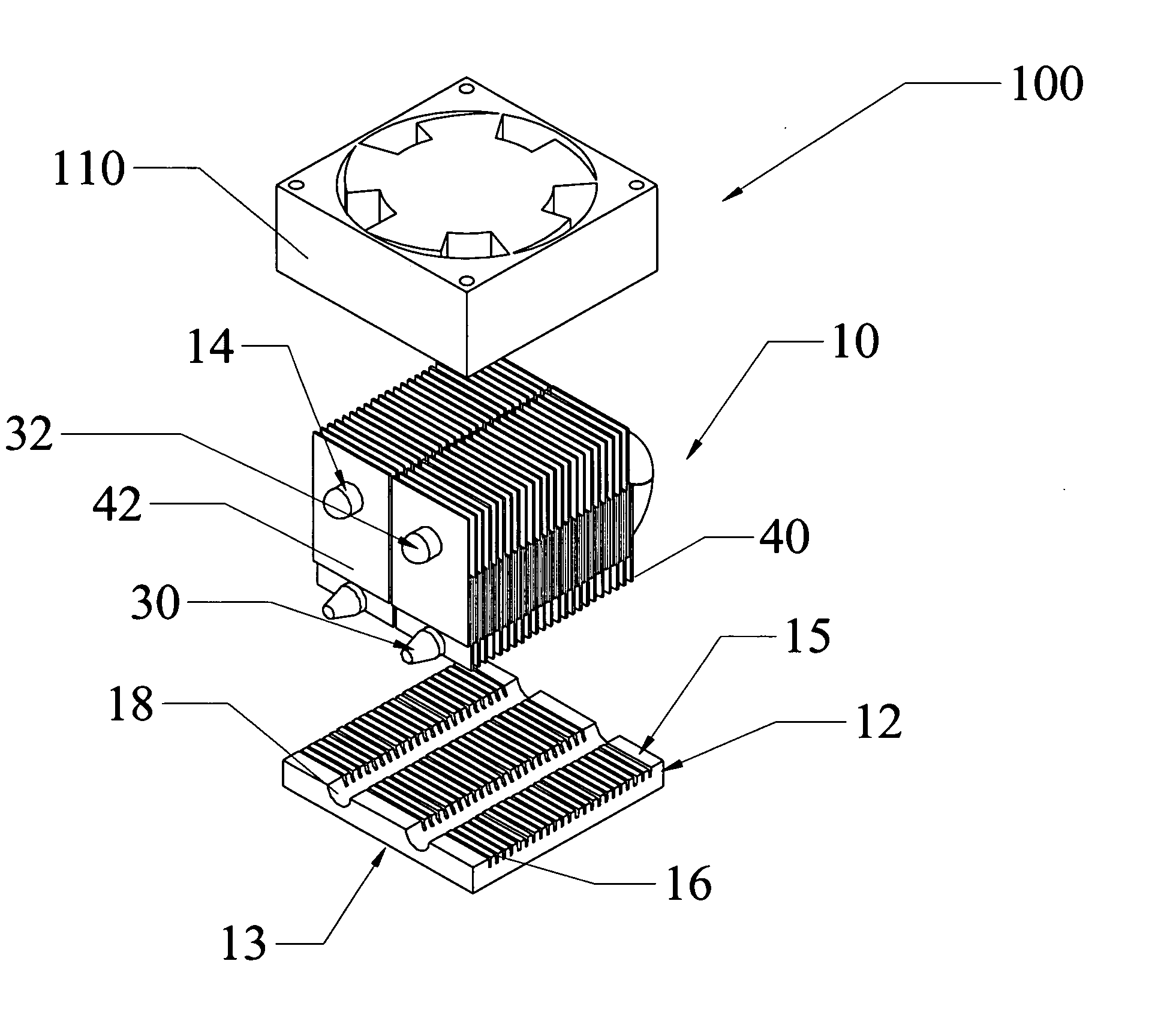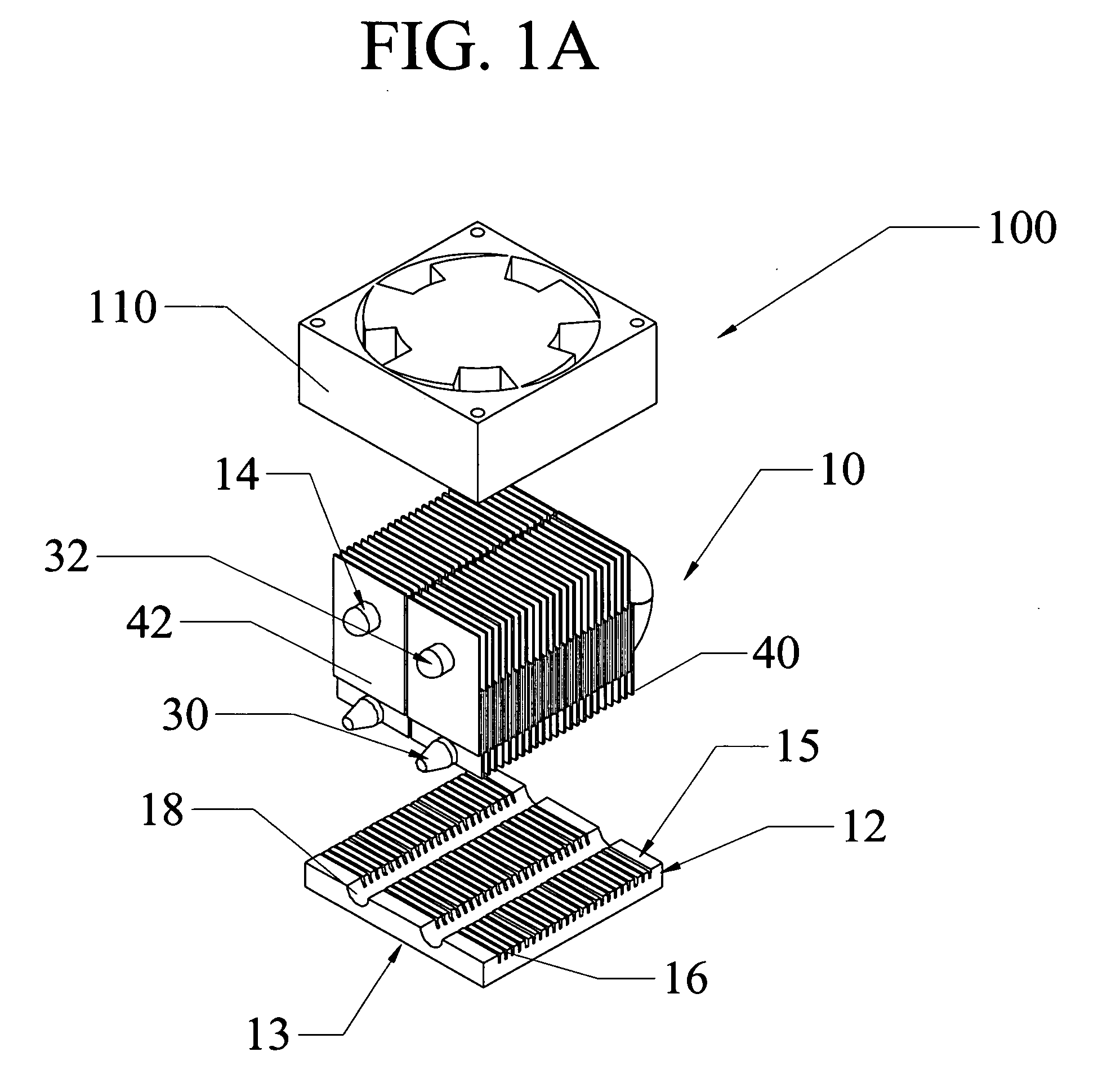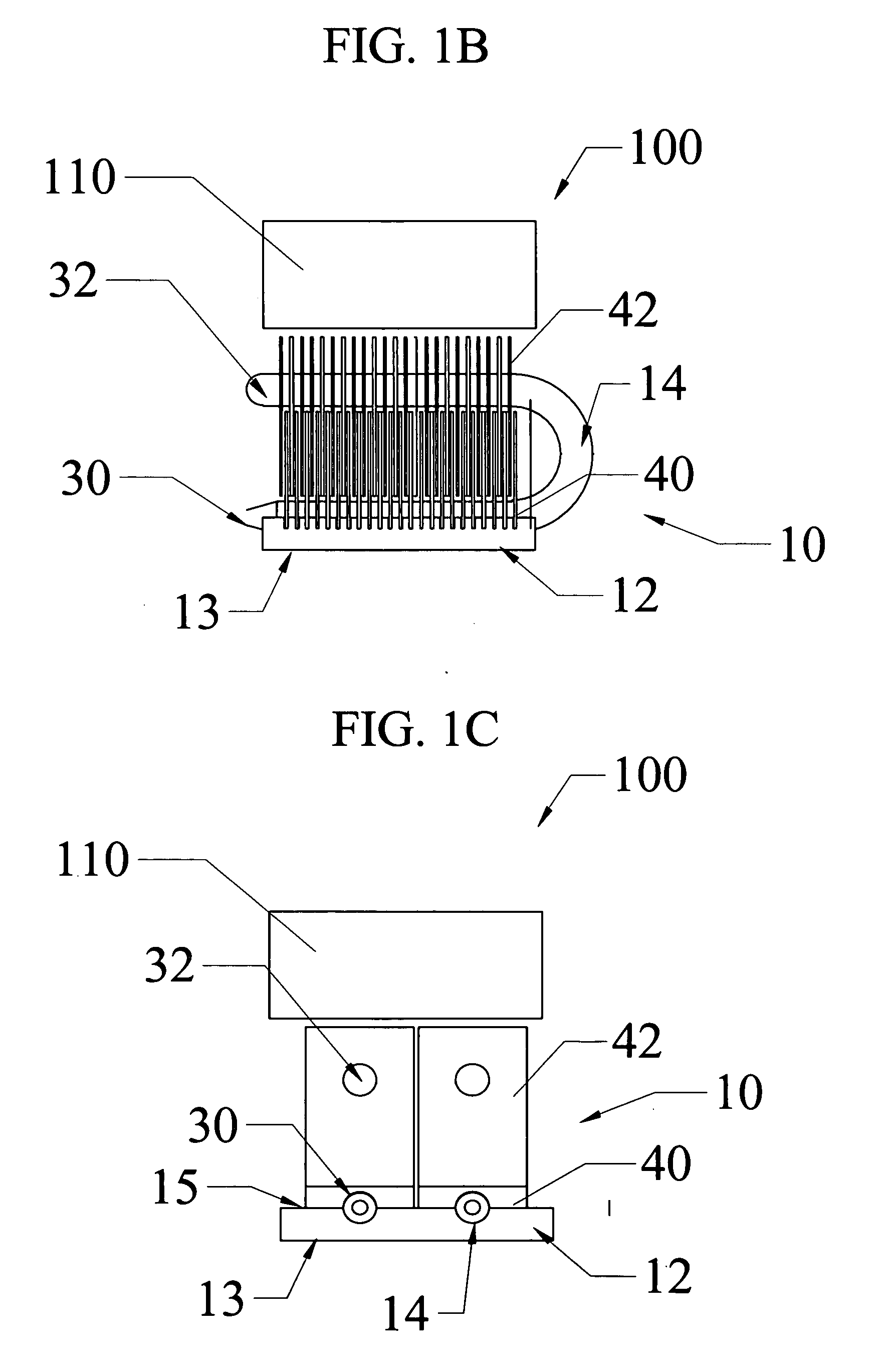Heat sink and heat sink assembly
a technology of heat sink and heat sink assembly, which is applied in the direction of indirect heat exchangers, electrical apparatus construction details, lighting and heating apparatus, etc., can solve the problems of limiting the effectiveness of any increase in heat sink surface area, and reducing the overall system size and cost. , to achieve the effect of dissipating large amounts of power
- Summary
- Abstract
- Description
- Claims
- Application Information
AI Technical Summary
Benefits of technology
Problems solved by technology
Method used
Image
Examples
Embodiment Construction
[0039] Referring first to FIGS. 1A-1C, one embodiment of the heat sink assembly 100 of the present invention is shown. The heat sink assembly 100 includes a heat sink 10 and a fan 110. The heat sink includes a base plate 12, a first plurality of convective surfaces, shown here as fins40, a pair of heat pipes 14, and a second plurality of convective surfaces 42, shown here as fins 42.
[0040] The top surface 15 of the base plate 12 includes a plurality of slots 16, into which the first plurality of fins 40, are attached, and a pair of channels 18, into which the evaporator portions 30 of a pair of heat pipes 14 are attached. The base plate 12 has a bottom surface 13 that is dimensioned and shaped to promote good thermal contact with the heat source (not shown). The base plate 12 is manufactured of a material, such as copper or aluminum, that has relatively good thermal conductivity, and should be of sufficient thickness to efficiently spread the heat from a heat source (not shown) dis...
PUM
 Login to View More
Login to View More Abstract
Description
Claims
Application Information
 Login to View More
Login to View More - R&D
- Intellectual Property
- Life Sciences
- Materials
- Tech Scout
- Unparalleled Data Quality
- Higher Quality Content
- 60% Fewer Hallucinations
Browse by: Latest US Patents, China's latest patents, Technical Efficacy Thesaurus, Application Domain, Technology Topic, Popular Technical Reports.
© 2025 PatSnap. All rights reserved.Legal|Privacy policy|Modern Slavery Act Transparency Statement|Sitemap|About US| Contact US: help@patsnap.com



